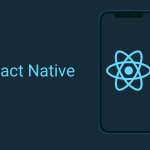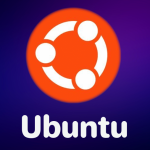Blockchain technology has evolved far beyond cryptocurrency. What began as the foundation for digital currencies like Bitcoin has transformed into a versatile tool driving innovation across multiple industries. Its ability to provide transparency, security, and decentralization is unlocking new possibilities that are redefining the digital economy. As we move deeper into the post-2025 era, blockchain is emerging as a key enabler of trust in a rapidly digitizing world.
Table of Contents
From Currency to Infrastructure
Initially, blockchain was synonymous with cryptocurrency transactions. Its decentralized ledger allowed peer-to-peer exchanges without intermediaries, creating financial systems that operated independently of traditional banks. Over time, developers realized that the same principle—secure, tamper-proof recordkeeping—could be applied to much more than just currency.
Today, blockchain serves as a foundational infrastructure for smart contracts, supply chain tracking, digital identity verification, and data integrity systems. The concept of programmable trust has shifted blockchain from a financial tool to a global innovation platform.
The Rise of Smart Contracts
Smart contracts have become one of blockchain’s most transformative innovations. These self-executing contracts automatically enforce rules and agreements without requiring intermediaries. By embedding logic directly into it, smart contracts reduce administrative costs and eliminate human error.
Industries like real estate, insurance, and logistics now rely on smart contracts to streamline transactions. For example, in supply chains, goods can trigger automatic payments when they reach certain checkpoints. In insurance, claims can be verified and processed instantly through coded verification systems.
Enhancing Transparency and Security
One of the most valuable features of it is its transparency. Every transaction is recorded across multiple nodes, making it nearly impossible to alter or delete data without consensus. This immutability ensures accountability and builds trust among stakeholders.
Cybersecurity is another major area of its innovation. Traditional centralized databases are vulnerable to single points of failure. Blockchain, by contrast, distributes data across networks, reducing the risk of large-scale breaches. Sectors such as healthcare and government are increasingly turning to blockchain to secure sensitive data and maintain accurate digital records.
Transforming Financial Systems
Decentralized finance, or DeFi, has become one of the most visible examples of blockchain’s potential. DeFi platforms allow users to lend, borrow, and trade assets directly, removing the need for traditional financial institutions. This model has increased global financial accessibility and encouraged innovation in areas such as digital lending, yield farming, and tokenized assets.
In addition, central banks are exploring blockchain to power digital currencies known as CBDCs. These systems combine the efficiency of it with the stability of traditional monetary policy, allowing for faster and more transparent transactions.
Beyond Finance: Expanding into New Domains
Blockchain’s reach now extends far beyond financial systems. In supply chain management, it provides end-to-end visibility, ensuring that products are authentic and ethically sourced. In digital identity, it empowers users to own and control their credentials without relying on centralized authorities.
The entertainment industry uses blockchain to manage royalties and verify ownership of digital assets. Even education and healthcare are adopting blockchain-based credentialing systems to ensure the authenticity of degrees, medical records, and research data.
Sustainability and Green Innovation
A newer trend shaping its evolution is sustainability. Early it systems faced criticism for high energy consumption. In response, developers have introduced more efficient consensus mechanisms like Proof of Stake, which significantly reduce power usage. Green blockchain projects are emerging to support renewable energy tracking, carbon credit trading, and sustainable finance systems.
The Road Ahead
As we move beyond 2025, blockchain will likely merge with artificial intelligence, the Internet of Things, and cloud computing to create integrated ecosystems. These technologies together will enable intelligent automation, predictive insights, and verifiable data sharing across industries.
The future of it lies not in isolated systems but in collaboration. Interoperability between blockchains will be crucial, allowing networks to exchange data and assets seamlessly. This shift will pave the way for a more connected, efficient, and transparent digital world.
Conclusion
Blockchain is no longer just the technology behind cryptocurrencies. It has become a global innovation engine that is transforming how businesses operate, governments function, and individuals interact online. By fostering transparency, trust, and decentralization, blockchain is powering the next wave of technological and economic evolution. Also Check Exploring the World of APIs – Backbone of Modern Tech 2025







1 thought on “How Blockchain Is Powering the innovation – Ultimate Guide 2025”